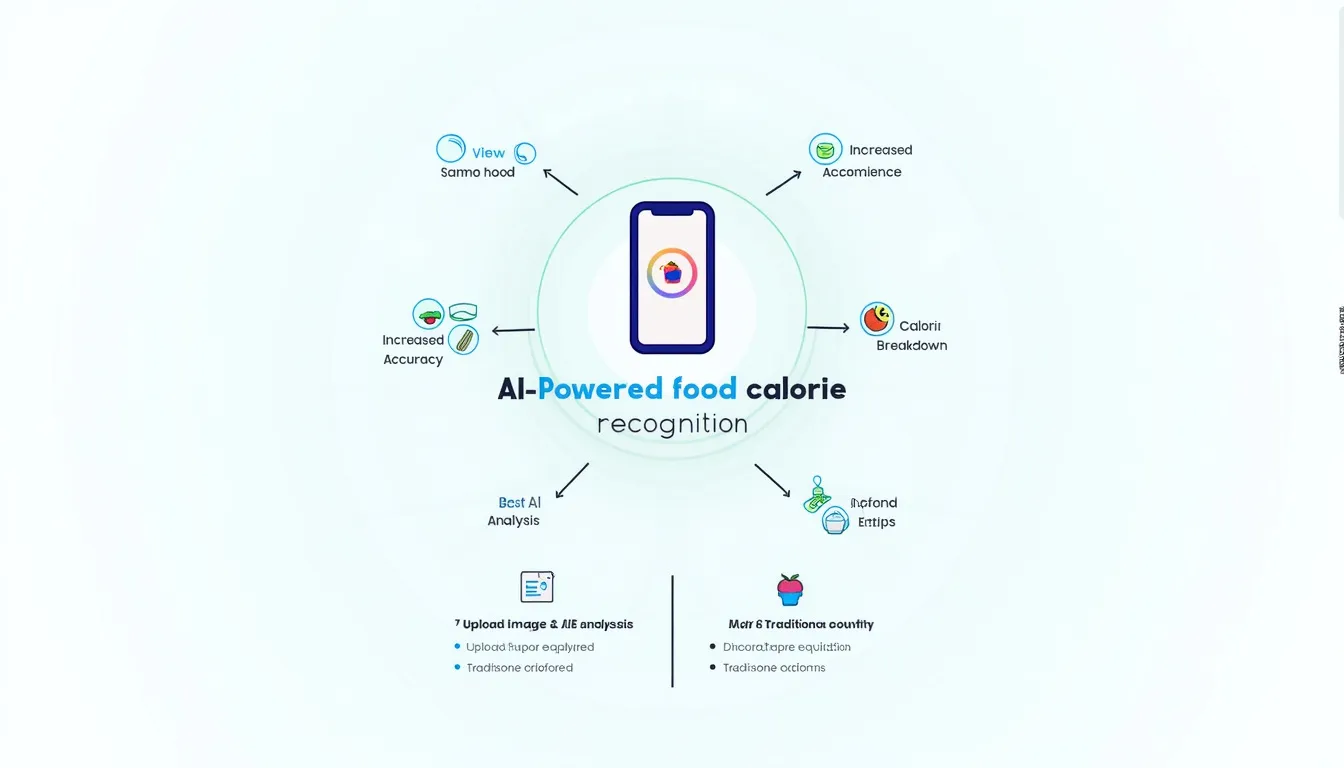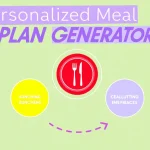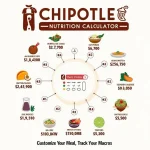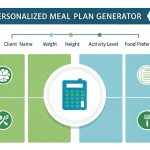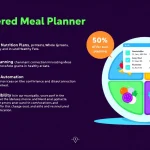Is this tool helpful?
How to Use the Food Calorie Recognition Tool Effectively
Our cutting-edge Food Calorie Recognition Tool harnesses the power of artificial intelligence to simplify your nutrition tracking. Here’s how to make the most of this innovative web-based calculator:
- Upload Your Food Image: Take a clear photo of your meal or snack and upload it to the tool.
- Provide Additional Information: If applicable, enter any dietary restrictions or preferences, and the approximate size of your plate or container.
- Submit and Wait: Click the “Recognize Food and Calculate Calories” button and allow our AI to analyze your image.
- Review Results: Examine the detailed breakdown of identified food items and their estimated calorie content.
- Adjust if Necessary: If you notice any discrepancies, you can manually adjust the results for improved accuracy.
- Save or Share: Use the “Copy to Clipboard” feature to easily save or share your results.
Revolutionizing Nutrition Tracking: An Introduction to AI-Powered Calorie Counting
In today’s health-conscious world, keeping track of your calorie intake is crucial for maintaining a balanced diet and achieving your fitness goals. However, traditional methods of calorie counting can be tedious, time-consuming, and prone to human error. Enter our Food Calorie Recognition Tool – a game-changing solution that leverages advanced image recognition technology and machine learning algorithms to instantly identify food items and estimate their calorie content from a single photograph.
This innovative web-based calculator is designed to simplify the process of tracking your daily calorie intake, making it easier than ever to stay on top of your nutritional goals. By combining state-of-the-art artificial intelligence with an extensive food database, our tool provides quick, accurate, and personalized calorie estimates for a wide variety of dishes and ingredients.
The Benefits of Using AI-Powered Food Calorie Recognition
Incorporating our Food Calorie Recognition Tool into your daily routine offers numerous advantages:
- Time-Saving: Say goodbye to manual calorie logging and tedious food diary entries.
- Increased Accuracy: Reduce human error and guesswork in portion size estimation.
- Convenience: Easily track your calorie intake on-the-go with just a smartphone camera.
- Educational: Learn about the calorie content of various foods to make informed dietary choices.
- Customizable: Account for dietary restrictions and preferences for personalized results.
- Motivation: Visualize your daily calorie intake to stay motivated and on track with your health goals.
- Versatility: Suitable for various diets, including keto, vegan, and gluten-free.
Addressing User Needs: How Our Tool Solves Common Nutrition Tracking Problems
Our Food Calorie Recognition Tool addresses several key challenges faced by individuals trying to monitor their calorie intake:
1. Overcoming Portion Size Estimation Difficulties
One of the biggest hurdles in accurate calorie tracking is estimating portion sizes. Our tool uses advanced image processing techniques to analyze the size of food items relative to the plate or container, providing a more precise estimate of portion sizes and, consequently, calorie content.
2. Handling Complex, Multi-Ingredient Meals
Unlike simple calorie-counting apps that require users to input each ingredient separately, our AI-powered tool can identify multiple food items in a single image. This is particularly useful for complex dishes or restaurant meals where individual ingredients may not be easily discernible.
3. Accounting for Different Cooking Methods
The calorie content of food can vary significantly depending on how it’s prepared. Our tool’s sophisticated algorithms take into account visual cues that indicate cooking methods (e.g., fried, grilled, or baked), adjusting calorie estimates accordingly.
4. Adapting to Diverse Cuisines
With its extensive food database and continuous learning capabilities, our tool can recognize and provide calorie estimates for a wide range of cuisines from around the world, making it suitable for users with diverse dietary preferences.
Practical Applications: Real-World Examples of Our Food Calorie Recognition Tool in Action
To illustrate the versatility and accuracy of our tool, let’s explore some practical examples:
Example 1: Mixed Salad Bowl
Imagine you’ve prepared a colorful salad bowl for lunch, containing mixed greens, grilled chicken breast, cherry tomatoes, avocado, and a sprinkle of feta cheese. Simply take a photo of your salad, and our tool will:
- Identify each component of the salad
- Estimate the portion size of each ingredient
- Calculate the total calorie content
Let’s say the tool provides the following breakdown:
- Mixed greens (2 cups): 10 calories
- Grilled chicken breast (4 oz): 185 calories
- Cherry tomatoes (1/2 cup): 27 calories
- Avocado (1/4 medium): 80 calories
- Feta cheese (1 oz): 75 calories
Total estimated calories: 377
This detailed breakdown not only gives you the total calorie count but also helps you understand the caloric contribution of each ingredient, allowing for more informed dietary decisions.
Example 2: Restaurant Meal
Consider a scenario where you’re dining out and order a plate of spaghetti carbonara. Traditional calorie tracking would require you to guess the ingredients and portion sizes or search for a generic “spaghetti carbonara” entry in a food database. With our tool, you can simply snap a photo of your meal, and it will:
- Recognize the dish as spaghetti carbonara
- Estimate the portion size based on the plate dimensions
- Account for typical ingredients like pasta, eggs, pancetta, and Parmesan cheese
- Provide a calorie estimate based on the specific preparation method and portion size
For instance, the tool might estimate:
- Spaghetti carbonara (standard restaurant portion): 850-950 calories
This estimate takes into account the rich sauce and generous portion sizes often found in restaurant meals, providing a more accurate representation of your calorie intake compared to generic database entries.
Example 3: Homemade Smoothie
Let’s say you’ve made a nutrient-packed smoothie for breakfast. You’ve added spinach, banana, protein powder, almond milk, and a tablespoon of chia seeds. After blending, you pour it into a glass and take a photo. Our tool will:
- Analyze the color and texture of the smoothie to identify potential ingredients
- Estimate the volume of the smoothie based on the glass size
- Provide a calorie estimate based on the identified ingredients and portion size
The tool might provide the following breakdown:
- Spinach (1 cup): 7 calories
- Banana (1 medium): 105 calories
- Protein powder (1 scoop): 120 calories
- Almond milk (1 cup): 30 calories
- Chia seeds (1 tbsp): 60 calories
Total estimated calories: 322
This example showcases the tool’s ability to handle homemade preparations and provide detailed nutritional information for complex, multi-ingredient items.
Frequently Asked Questions (FAQ)
1. How accurate is the Food Calorie Recognition Tool?
Our tool utilizes state-of-the-art AI and machine learning algorithms, achieving an accuracy rate of 80-90% for most common food items. However, accuracy may vary for very complex or unusual dishes.
2. Can the tool recognize packaged foods?
Yes, our tool incorporates Optical Character Recognition (OCR) technology to read nutritional labels on packaged foods, providing accurate calorie information directly from the source.
3. Does the tool work for international cuisines?
Absolutely! Our extensive food database includes dishes from various international cuisines, and the AI is continuously learning to recognize new and diverse food items.
4. Can I use the tool for tracking macronutrients as well?
While our primary focus is on calorie estimation, the tool also provides approximate macronutrient breakdowns (protein, carbohydrates, and fats) for most recognized food items.
5. How does the tool handle mixed dishes or casseroles?
For mixed dishes, the tool analyzes visible ingredients and compares the overall appearance to similar dishes in its database. While it may not identify every ingredient, it provides a reasonable estimate based on typical recipes and portion sizes.
6. Is my data secure when I upload food images?
We take data privacy seriously. All uploaded images are processed securely and are not stored long-term. Our systems comply with standard data protection regulations.
7. Can I use the tool offline?
Currently, the tool requires an internet connection to access our AI algorithms and food databases. However, we’re exploring options for limited offline functionality in future updates.
8. How often is the food database updated?
Our food database is continuously updated with new items and nutritional information. The AI model is retrained regularly to improve accuracy and expand its recognition capabilities.
9. Can the tool account for different cooking methods?
Yes, our AI is trained to recognize visual cues that indicate different cooking methods (e.g., fried, grilled, baked) and adjusts calorie estimates accordingly.
10. Is the tool suitable for people with specific dietary restrictions?
Absolutely! You can input your dietary restrictions or preferences, and the tool will provide relevant nutritional information and alternatives when applicable.
Please note that while we strive for accuracy and reliability, we cannot guarantee that the webtool or results from our webtool are always correct, complete, or reliable. Our content and tools might have mistakes, biases, or inconsistencies. Always consult with a healthcare professional or registered dietitian for personalized nutritional advice.
Conclusion: Embrace the Future of Nutrition Tracking
Our AI-powered Food Calorie Recognition Tool represents a significant leap forward in nutrition tracking technology. By simplifying the process of calorie counting and providing accurate, instant results, we’re empowering users to make informed dietary choices and achieve their health goals with greater ease.
Key benefits of our tool include:
- Time-saving automation of calorie tracking
- Increased accuracy in portion size estimation
- Convenience for on-the-go nutrition monitoring
- Educational insights into the caloric content of various foods
- Customizable features to accommodate diverse dietary needs
- Motivation through visual representation of daily calorie intake
Whether you’re a fitness enthusiast, a health-conscious individual, or someone looking to make positive changes in your diet, our Food Calorie Recognition Tool is here to support your journey. Say goodbye to tedious manual logging and embrace the future of nutrition tracking.
Ready to revolutionize your approach to calorie counting? Try our AI-powered Food Calorie Recognition Tool today and experience the difference for yourself. Upload your first food image now and take the first step towards effortless, accurate nutrition tracking!
Important Disclaimer
The calculations, results, and content provided by our tools are not guaranteed to be accurate, complete, or reliable. Users are responsible for verifying and interpreting the results. Our content and tools may contain errors, biases, or inconsistencies. We reserve the right to save inputs and outputs from our tools for the purposes of error debugging, bias identification, and performance improvement. External companies providing AI models used in our tools may also save and process data in accordance with their own policies. By using our tools, you consent to this data collection and processing. We reserve the right to limit the usage of our tools based on current usability factors. By using our tools, you acknowledge that you have read, understood, and agreed to this disclaimer. You accept the inherent risks and limitations associated with the use of our tools and services.
